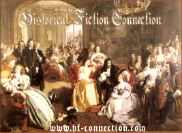
- as the first letter in the title
- as the first letter of the author's first or last name
- the first letter of a character's first or last name
- the first letter of a place where an historical event took place
London, Edward Rutherfurd
From the back cover: In the tradition of his phenomenal bestseller Sarum, Edward Rutherfurd now gives us a sweeping novel of London, a glorious pageant spanning two thousand years. He brings this vibrant city's long and noble history alive through the ever-shifting fortunes, fates, and intrigues of half-a-dozen families, from the age of Julius Caesar to the twentieth century. Generation after generation, these families embody the passion, struggle, wealth, and verve of the greatest city in the world...
After reading Rutherfurd's novel about Sarum (Salisbury) I couldn't wait to see what he did with the families in London. I was not disappointed. Starting at the banks of the Thames with the druids right before the Roman conquest of England and stopping on the banks of the Thames in 1997, Rutherfurd paints an absolutely amazing picture of London. He includes several different maps at the beginning which show London in different periods in its history and I found it fascinating to see how the city changed and expanded throughout the years. He also includes, thankfully, a very helpful family tree which really comes in handy when you're trying to keep up with all the families and their intertwining story lines throughout the novel. Of course there is going to be the usual embellishment that you're going to find in any fictional novel but it is mixed so well with history that nothing is going to see really out of place (or time). The novel is about several families that live in London, though thankfully all of these families do not show up in each chapter (which are divided pretty much according to a major event in each historical period [Roman, Anglo-Saxon, Norman Conquest, etc]) so you will only have to keep up with around three to four of the families per time period. It is really fascinating to follow these families and their relationships with each other. It really shows us how families in these distant days would pass on their feuds and friendships down through the generations.
Now that I am much more familiar with many of the periods and events covered here I will probably go back and re-read it. This is a long novel (prepare yourself for some flipping back and forth between your reading and the maps and family tree at the front) and some parts will drag a bit but I do not think you'll be disappointed. I thoroughly enjoyed this adventure through London's history and I would recommend it to anyone, especially those interested in London's very colorful history.
Please read my entire review on this novel here.























Thanks for posting this review! I read Rutherford's The Forest years ago, and really enjoyed it. I loved seeing the place change over the course of the story, and the way it followed the same families as they rose and fell in relation to one another. Thanks!
ReplyDelete